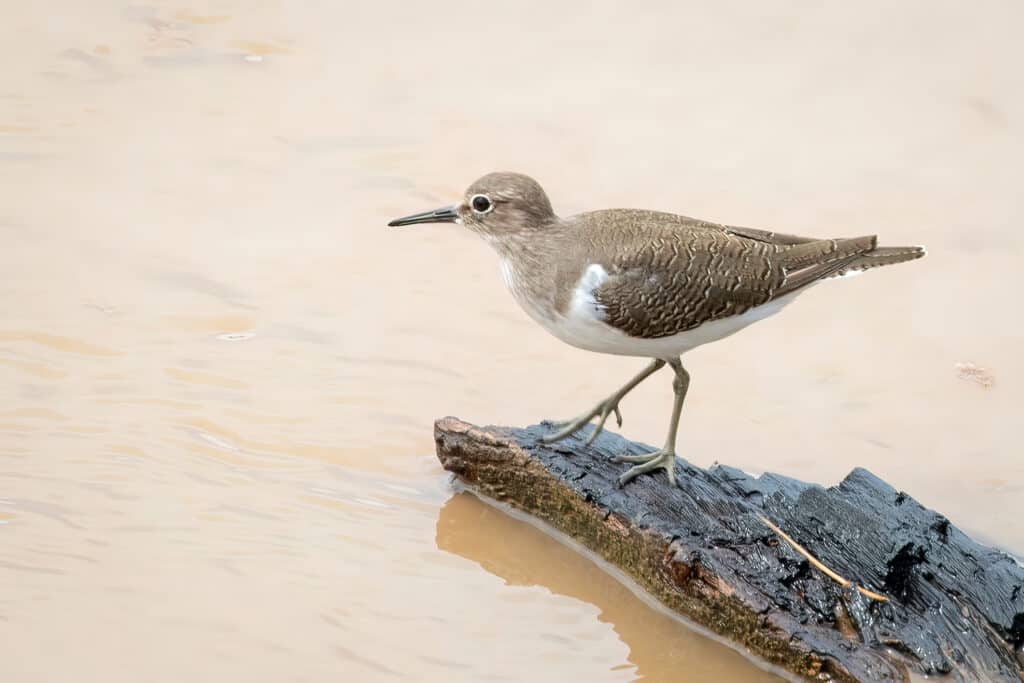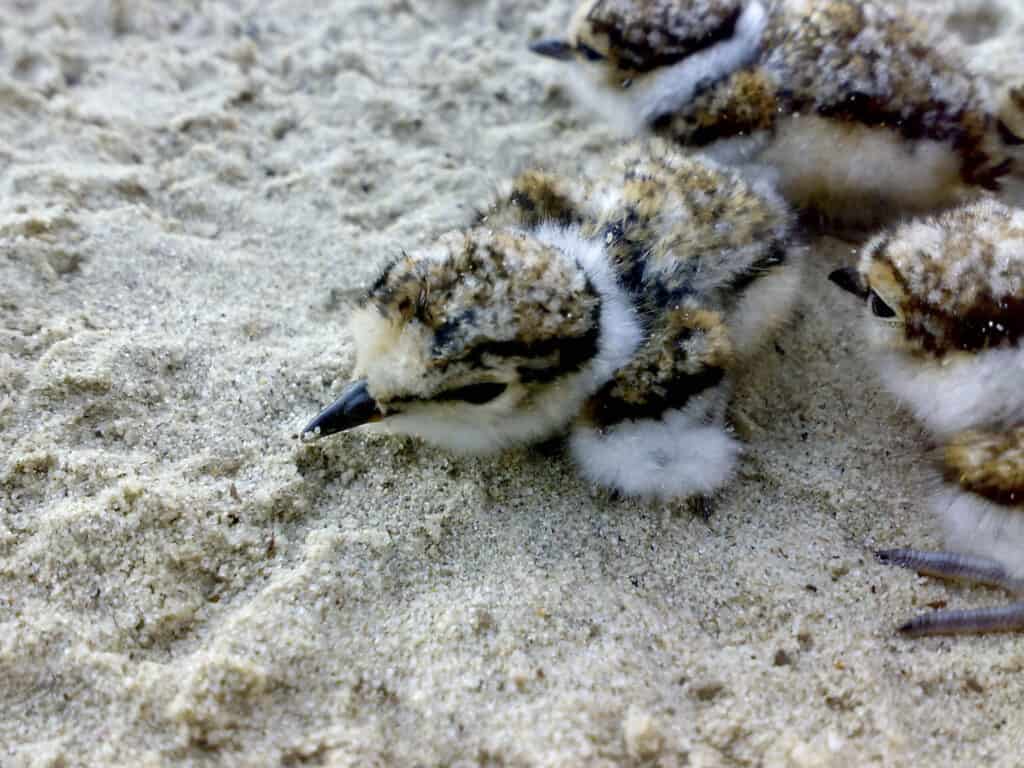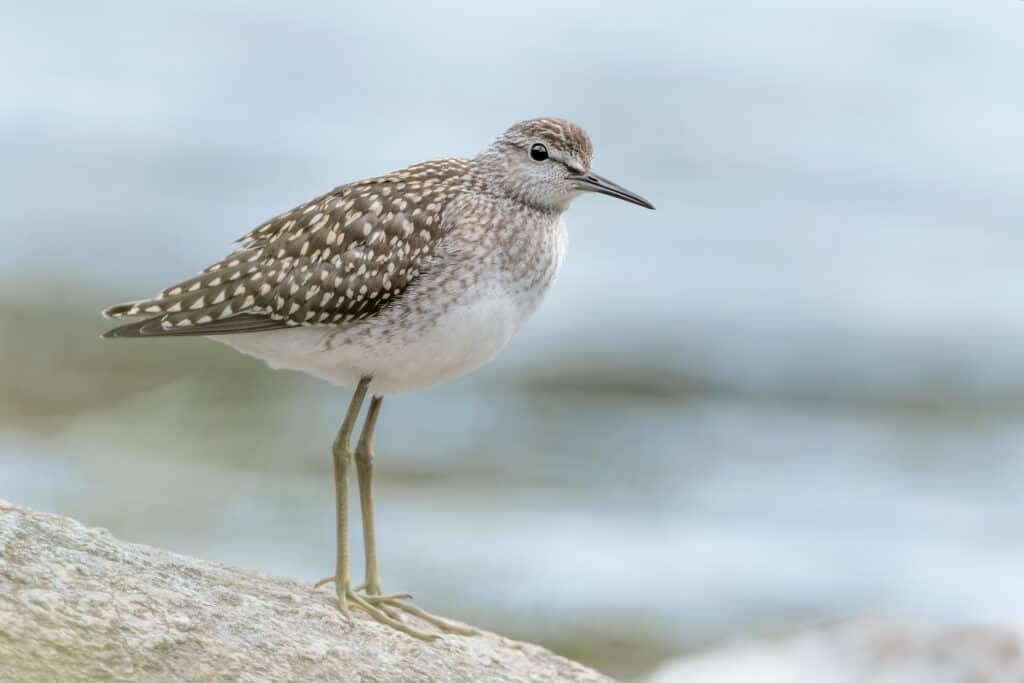Sandpipers are birds that belong to the family Scolopacidae. They have long legs and bodies, as well as narrow wings. Most species of sandpiper have narrow bills, which assist them in finding food.
There are 98 species within the Scolopacidae family that are recognized by the International Ornithological Committee. These include species that are directly named sandpipers, in addition to snipes, curlews, and a few others.
Not all sandpipers eat the exact same diet, but there is a lot of commonality between the species of this family.
What Foods Do Sandpipers Eat?

Sandpipers eat a diet consisting mostly of small invertebrates, although some also eat berries, seeds, and grains.
©iStock.com/JNevitt
Sandpipers eat a diet that consists mostly of smaller invertebrates, such as insects, worms, and small arthropods. They are typically carnivores, although some are omnivores and also eat foods such as berries, seeds, and grains.
However, even the species of sandpipers that will feed on vegetation generally only do so when their preferred food sources are scarce or absent.
The following is a list of the most common foods that sandpipers eat:
- Worms
- Snails
- Shrimp
- Crabs
- Clams
- Insects
- Spiders
- Small fish
- Berries
- Seeds
- Grains
- Plant shoots
- Biofilm (nutritious slime layer that accumulates on moist, sandy shores)
It had previously been thought that only some fish and invertebrates would eat biofilm, but there is now evidence that at least some sandpipers eat it as well.
A study was done that examined the stomach contents of western sandpipers, along with stable isotopes and video recordings; it was found that biofilm actually composes between 45 and 59 percent of their total diet. The researchers were able to see that up to half of their energy was being derived from biofilm.
Since many invertebrates also consume biofilm, sandpipers compete for food (biofilm) with some of their prey.
Biofilm is composed of microorganisms, sediment, and detritus, in addition to compounds secreted by the microorganisms that hold this rich slime together.
When foraging for biofilm, sandpipers move more slowly than when looking for insects and crustaceans. This is because there’s no need to sneak up on biofilm. Sandpipers use their bills and feathery tongues to grab and eat small balls of biofilm.
Not very much is known about how sandpipers stay hydrated. However, it is known that many shorebirds have glands in their bodies that desalinate saltwater. This means that if they live in an environment that includes salt water, they can simply drink it.
How Do Sandpipers Eat?

Sandpipers usually forage for food in the ground, using their bills to find food in sand or mud.
©iStock.com/yod67
Most of the time, sandpipers are ground feeders that forage for food. The most common feeding method of the sandpiper is using their bills to dig into sand or mud in order to find their prey. Some peck with occasional probing, and others just probe.
However, they have also been known to wade in shallow water to find their prey there and scoop it up in their bills. Sandpipers can also grab their prey off of the surface of water or even catch insects that are actually flying!
Sandpipers almost always use their bills to catch food. As there are many different types of sandpipers, their bills vary quite a bit in length. Sandpiper bills are very sensitive, allowing them to feel around for food effectively.
The different lengths of sandpiper bills, in addition to their different feeding methods, allow different species to each have their own niche in their habitat. This allows them to look for food and coexist without being in direct competition with one another.
If a sandpiper is eating hard-shelled prey, such as a clam, it can use its bill to open up the shell. It can then pull out all of the meat from inside the shell.
The majority of sandpipers are diurnal, mostly capturing prey during the day. However, some species are nocturnal. It’s also possible for sandpipers to be intermittently active, regardless of the time of day. If the weather is particularly warm, they’re more likely to sleep when the sun is out and be more active during sunrise and sunset.
What Do Baby Sandpipers Eat?

Baby sandpipers eat diets similar to their parents, but they can usually only eat soft-bodied prey in the early stages.
©iStock.com/Leonid Eremeychuk
Baby sandpipers are actually fairly independent. They feed themselves. Shortly after they hatch, they generally follow their parents. They usually pick up small invertebrates, such as spiders, worms, and insects.
Parental care of baby sandpipers varies from species to species. In the case of the spotted sandpiper, it’s actually the father who incubates the eggs, broods the babies and helps the young find food. Female spotted sandpipers actually have lower prolactin levels than their male counterparts; prolactin is a hormone that triggers parenting behaviors in many animals.
However, their diets aren’t exactly like those of their adult counterparts. In the very early stages, they can usually only manage to eat soft-bodied prey. When they are a little bit older and strong enough, they can start eating the invertebrates with hard shells.
What to Feed Sandpipers

Although sandpipers do not make good pets, humans can try feeding them food that resembles their own natural prey.
©iStock.com/Paolino Massimiliano Manuel
If you live in an environment that overlaps with the natural habitat of sandpipers, such as a wetland or coastline area, you might encounter them. These birds can usually find food on their own, such as insects in your yard.
However, if you feel the need to feed one or you see one that’s injured and needs some help, providing it with some sort of small invertebrate (whether fresh or freeze-dried) could be helpful.
Sandpipers are actually quite common in aquariums and zoos. When they live in captivity, it’s usually in some sort of a tidal enclosure. This way, they’ll be able to forage for food as they would in the wild. Usually, they end up being part of mixed-species exhibits.
Zookeepers will generally feed sandpipers small invertebrates (as they would eat in the wild) or food pellets. The exact care of these birds depends on the species, as each one has somewhat different requirements.
Even though it may be okay to feed sandpipers when you come into contact with them, it’s important to note that sandpipers are not appropriate pets. They are wild birds, and they generally do not interact well with humans. In most locations, it’s actually illegal to own or capture a sandpiper.
The photo featured at the top of this post is © Agami Photo Agency/Shutterstock.com
Thank you for reading! Have some feedback for us? Contact the AZ Animals editorial team.






